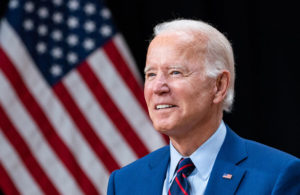
President Joe Biden [Image courtesy of the White House]
The treatment has been in short supply since it won emergency use authorization late last year.
Last year, when Merck & Co. (NYSE: MRK) and Pfizer were close to winning regulatory authorization for COVID-19 antivirals, many pundits hailed the treatments as a potential gamechanger.
To date, however, the use of antivirals has been limited, although demand has been especially high for Pfizer’s Paxlovid antiviral. Demand for Merck’s molnupiravir has been weak, as a recent article from NPR explains.
Now, Biden’s plan calls for providing the antiviral at no cost immediately after individuals receive a positive COVID-19 test result.
Available under emergency use authorization (EUA), Paxlovid is indicated to treat mild-to-moderate COVID-19 in individuals at least 12 years old who weigh at least 40 kg (about 88 pounds). Currently, use of the drug is limited to those deemed to face a high risk for progression to severe COVID-19.
In the State of the Union address, the President acknowledged that supplies of Paxlovid had been limited but stated that “Pfizer is working overtime to get us 1 million pills this month and more than double that next month.”
The White House website notes that approximately 4 million treatment courses were available in February, and an additional 1 million would be available in March. In April, Pfizer projects it can provide the U.S. government with an additional 2.5 million courses.
The U.S. has a contract to procure a total of 20 million doses.
An interim analysis of a Phase 3 trial indicated that Paxlovid reduced the risk of COVID-19 related hospitalization or death by 89% compared to placebo.
The White House also plans to help ramp up domestic manufacturing capability to produce an additional 1 billion COVID-19 doses annually.
The U.S. intends to foster R&D related to creating a vaccine that is effective against all SARS-CoV-2 variants.
The White House also plans on working with Congress to deliver 1.2 billion additional COVID-19 doses to developing countries.




Tell Us What You Think!